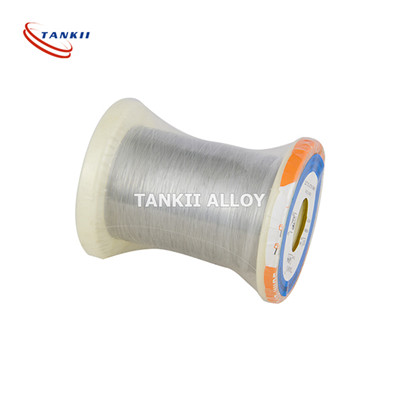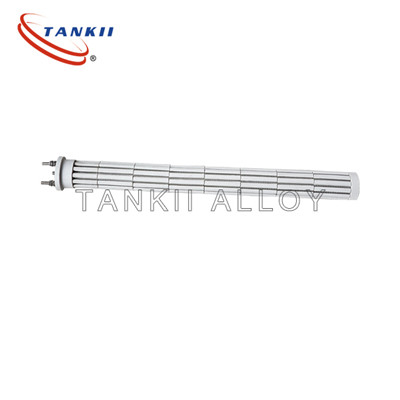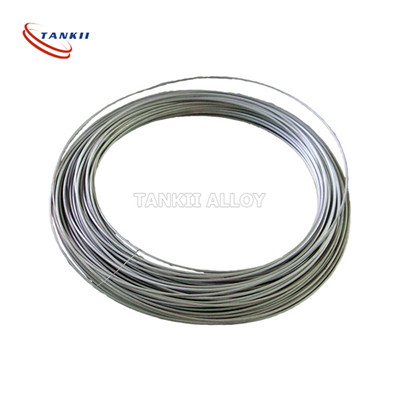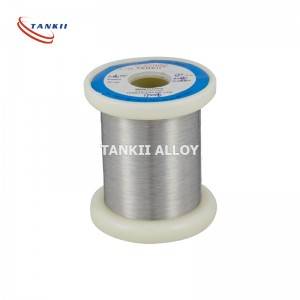8 Year Exporter Stablohm 675 - Karma Wire for Precision Resistors (0.02mm, 0.03mm, 0.04mm) – TANKII
8 Year Exporter Stablohm 675 - Karma Wire for Precision Resistors (0.02mm, 0.03mm, 0.04mm) – TANKII Detail:
Karma Wire for Precision Resistors (0.02mm, 0.03mm, 0.04mm)
1. Karma alloy
Karma alloy is made up of copper, nickel, Aluminum and Iron as the main components. The resistivity is 2~3 times higher than MENTONG. It has lower temperature coefficient of resistance(TCR), lower thermal EMF versus copper, good permanence of resistance for a long period of time and strong anti-oxidation. Its working temperature range is wider than MENTONG (-60~300ºC). It is suitable for making fine precision resistance elements and strain.
2. Karma size
Wire: 0.01mm-10mm
Ribbon: 0.05*0.2mm-2.0*6.0mm
Strip: 0.5*5.0mm-5.0*250mm
3.Karma Property
| name | code | Main Composition (%) | Standard | |||
| Cr | Al | Fe | Ni | |||
| Karma | 6J22 | 19~21 | 2.5~3.2 | 2.0~3.0 | bal. | JB/T 5328 |
| Name | Code | (20ºC) Resistivity (μΩ.m) |
(20ºC) Temp. Coeff.Of Resistance (αX10-6/ºC) |
(0~100ºC) ThermalEMF vs.Copper (μv/ºC) |
Max.working Temp.(ºC) |
(%) Elongation |
(N/mm2) Tensile Strength |
Standard |
| Karma | 6J22 | 1.33±0.07 | ≤±20 | ≤2.5 | ≤300 | >7 | ≥780 | JB/T 5328 |
4. Distinctive features of Karma resistance wire
1) Starting with Nickel Chromium electric heat wire Class 1, we replaced some of the Ni with
Al and other elements, and thus achieved a precision resistance material with improved
resistance temperature coefficient and heat electromotive force against copper.
With the addition of Al, we have succeeded in making volume resistivity 1.2 times greater
than Nickel Chromium electric heat wire Class 1 and the tensile strength 1.3 times greater.
2) The secondary temperature coefficient β of Karmalloy wire KMW is very small, - 0.03 × 10-6/ K2,
and the resistance temperature curve turns out to be almost a straight line within a wide
temperature range.
Therefore, the temperature coefficient is set to be the average temperature coefficient between
23 ~ 53 °C, but 1 × 10-6/K, the average temperature coefficient between 0 ~ 100 °C, also may
be adopted for the temperature coefficient.
3) Electromotive force against copper between 1 ~ 100 °C is also small, below + 2 μV/K, and
exhibits excellent stability over a period of many years.
4) If this is to be used as a precision resistance material, low temperature heat treatment is
required to eliminate processing distortions just as in the case of Manganin wire CMW.
Product detail pictures:
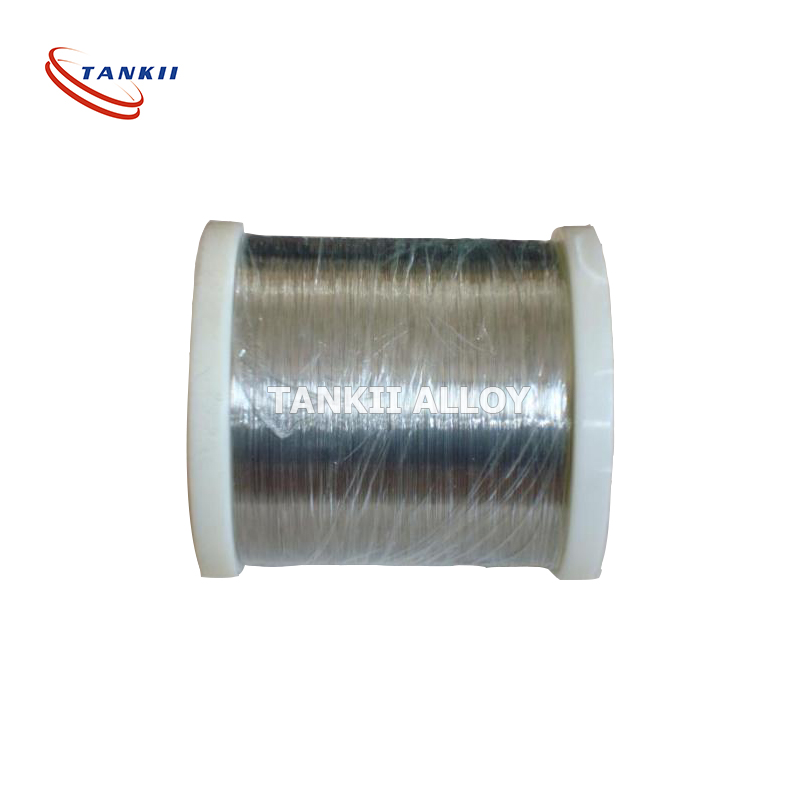
Related Product Guide:
It can be our accountability to satisfy your preferences and competently provide you. Your satisfaction is our greatest reward. We are searching ahead towards your visit for joint growth for 8 Year Exporter Stablohm 675 - Karma Wire for Precision Resistors (0.02mm, 0.03mm, 0.04mm) – TANKII , The product will supply to all over the world, such as: Finland, Jordan, Chicago, During the 10 years of operating, our company always try our best to bring consumption satisfaction for user, built a brand name for ourselves and a solid position in the international market with major partners come from many countries such as Germany, Israel, Ukraine, United Kingdom, Italy, Argentina, France, Brazil, and so on. Last but not least, price of our products are very suitable and have fairly high competition with other companies.
A good manufacturers, we have cooperated twice, good quality and good service attitude.





